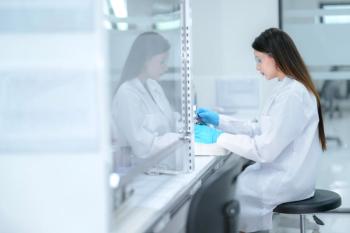
Technology Can Improve HIV Viral Load Monitoring
New testing procedure can quickly evaluate HIV levels in the blood.
Monitoring viral loads may become easier than ever for HIV-positive individuals.
This device analyzes a drop of blood to detect HIV, and then creates an electrical signal that can be read by a computer, laptop, or handheld device. New research published in Scientific Reports shows that the disposable test can accurately produce a result in under 30 minutes, and can help HIV patients monitor their own treatment.
Currently, tests used to detect HIV viral loads take 3 days or longer, and requires blood samples to be sent to a laboratory. Unfortunately, in many parts of the world, especially areas with high HIV incidence, this test is not available.
“HIV treatment has dramatically improved over the last 20 years — to the point that many diagnosed with the infection now have a normal life expectancy,” said senior study author Graham Cooke. “However, monitoring viral load is crucial to the success of HIV treatment. At the moment, testing often requires costly and complex equipment that can take a couple of days to produce a result. We have taken the job done by this equipment, which is the size of a large photocopier, and shrunk it down to a USB chip.”
The authors noted that although the device is still in the early stages, it would give patients the ability to regularly monitor their viral levels in a way similar to how diabetics check their blood sugar levels. Additionally, the technology could be particularly beneficial in remote regions in
The device uses a mobile phone chip that just needs a small sample of blood, before being placed on a spot on a USB stick. If HIV is present in the sample, it triggers a change in acidity, which the chip then transforms into an electrical signal. The signal is sent to the USB stick, which produces the result in a program on a computer or electronic device.
During the most recent study of the device, researchers used it to test 991 blood samples, with 95% accuracy. The average time to get a result was 20.8 minutes.
The technology was developed in conjunction with the Imperial spinout company DNA Electronics (DNAe), which is currently using the same technology to develop a device that detects bacterial and fungal sepsis and antibiotic resistance.
“This is a great example of how this new analysis technology has the potential to transform how patients with HIV are treated by providing a fast, accurate, and portable solution,” said DNAe Founder Chris Toumazou. “At DNAe we are already applying this highly adaptable technology to address significant global threats to health, where treatment is time-critical and needs to be right [the] first time.”
In addition to HIV, the team is investigating whether the device can be used to test other viruses, such as hepatitis.
Newsletter
Stay informed on drug updates, treatment guidelines, and pharmacy practice trends—subscribe to Pharmacy Times for weekly clinical insights.





















































































































































































































